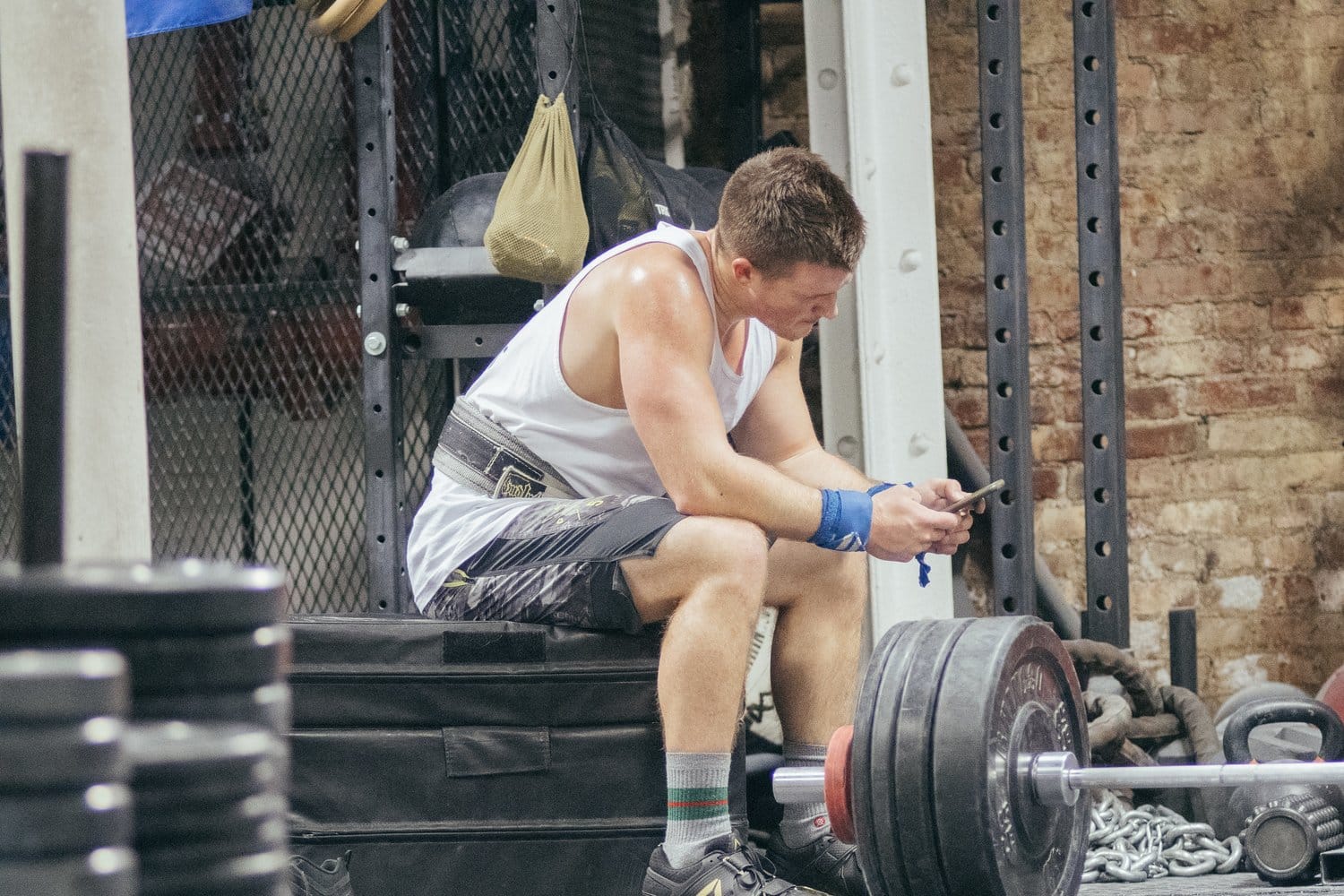In an earlier article we took a very deep look at what glycogen is, the benefits it can provide strength, power, and fitness athletes, and how you can maximize its ergogenic effects. Sometimes, however, an athlete/coach may not not be aware that of dropping or depleted glycogen levels, which can be a detrimental (and highly controllable) environment for optimal performance, strength, power, and muscle growth.
Therefore, in this article we will discuss common signs and symptoms of glycogen depletion so that coaches and athletes can monitor themselves closer and avoid depleting energy-rich stores of glycogen within muscle tissues.
Editor’s Note: The content on BarBend is meant to be informative in nature, but it should not be taken as medical advice. When starting a new training regimen and/or diet, it is always a good idea to consult with a trusted medical professional. We are not a medical resource. The opinions and articles on this site are not intended for use as diagnosis, prevention, and/or treatment of health problems. They are not substitutes for consulting a qualified medical professional.

Signs and Symptom of Glycogen Depletion
Below are six (6) common signs and symptoms of glycogen depletion that coaches and athletes can use to determine if they’re at risk for glycogen depletion.
Decreased Strength and Power
Skeletal muscles rely heavily on stored muscle glycogen to fuel forceful and explosive muscle contractions. When lifting heavier weights (and even lighter weights for this matter), the body is primarily working anaerobically (without oxygen). Carbohydrates are necessary for the body to kickstart this metabolic process (as fats are oxidized via the Krebs Cycle, which also require carbohydrates), and without ample carbohydrates in the system the body will not be able to produce high amounts of energy to promote forceful muscle contractions. While there may be other factors that contribute to decreased strength and power, low muscle glycogen levels (glycogen depletion) can be responsible (in addition to lack of recovery).
Increased Rate of Perceived Exertion
Increase rate of perceived exertion (RPE) is often seen with athletes and lifters who are experiencing glycogen depletion. Typically, this will occur when an athlete perceives the normal workouts (might not necessarily be just one bad day, but a series of bad workouts) routine as noticeably harder than usual. This can obviously be due to a magnitude of factors, however increasing workloads, intensities, and need for recovery and restoration from hard training demands a greater emphasis on carbohydrate consumption and glycogen repletion.
Feeling of “Flatness” in Muscle Bellies
Muscle glycogen is stored in skeletal muscle, and along with that comes increased muscle volume due to mainly water being drawn into muscles. One way to judge whether or not you may be having glycogen depletion is to self-assess how the your muscles looks/feel compared to normal. A glycogen rich muscle often holds water, giving it a feeling of fullness and size (which can be a subjective measure nonetheless). If you are experiencing a feeling of flatness or depleted muscles (yes, as crazy as this sounds), it may be due to glycogen depletion.
Increase Weight Loss (Water) Overnight
In addition to feeling “flat”, you may notice large fluctuations of body weight while you sleep, which often suggest water loss. While this can be from other reasons, such as you cutting for a competition, it can also suggest that your muscle glycogen levels are dropping, which in turn has you lose water volume. This is often why many low-carb diets will produce significant decreases in weight loss in the very early stages of a diet. Conversely, this is also why some low-carb diet programs stall out, and often result in decreased muscle tissue, strength, and power (more from glycogen depletion than water loss).
Lack of Recovery
While recovery issues from strenuous exercise sessions and/or prolonged period of training can happen for many reasons, nutritional factors can play a significant role in one’s ability to recover. During hard training periods, muscles are asked to perform at higher intensities, greater volumes, and more often (generally). If an athlete fails to replenish muscle glycogen after every session, he/she may slowly diminish the amount of muscle glycogen they have on a daily basis, ultimately going into a depleted state. The solution is to replenish glycogen immediately (or even during) hard training sessions and throughout the day (process take longer than one day) to avoid this catabolic stage.
Decrease Exercise-Performance During Longer Workouts
While this can simply be due to muscle fatigue or the fact you have done a tough workout, it may also be due to glycogen depletion, which can set in 20-30 minutes into hard training sessions (assuming you came into the session with high levels of muscle glycogen). It is often for this reason that strength, power, fitness, and endurance athlete will supplement with carbohydrates (and proteins, often BCAAs) during training sessions so that they may keep their muscle glycogen levels high (which also triggers protein synthesis and decreases RPE).
Learn More About Sports Nutrition
Take a look below at some of our top sports nutrition articles!
Featured Image: Mike Dewar via Martin Romero Photography